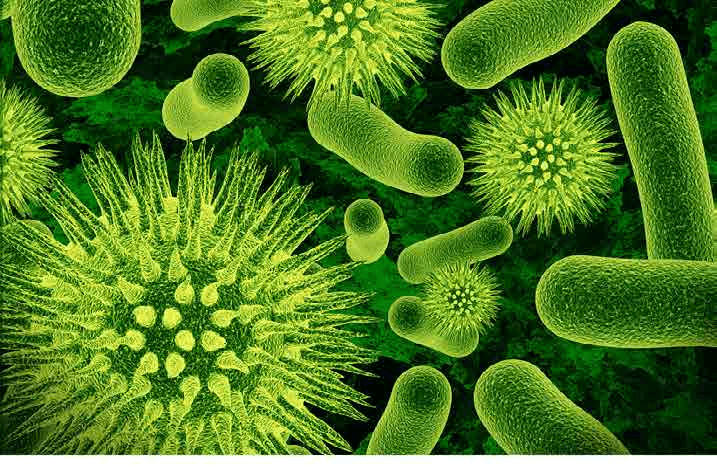“Materials Matter” Column 3 New Surfactant Design Dr. Rigoberto Advincula
- 03 Jan 2020
- Volume 18
- NanoScientific Magazine, Winter 2020
 MATERIALS MATTER
MATERIALS MATTER
Column Highlighting Topics Presented in Dr. Advincula’s Monthly Webinars on Advancements in Material Science
Dr. Rigoberto Advincula, Professor, Macromolecular Science & Engineering, Case Western Reserve University
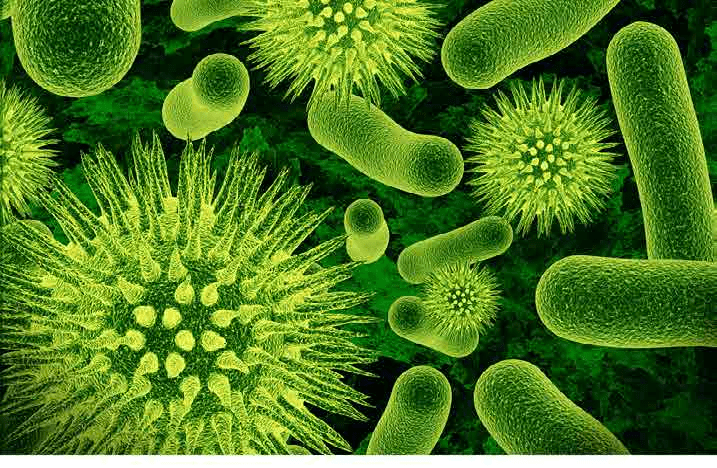

Photo Caption: The global market for Microbial Biosurfactants is expected to show a healthy CAGR of +4% over the course of the given forecast period of 2019 to 2026.
What is surfactant chemistry?
Surface science based on surfactant chemistry includes common surfactant hydrophones and hygrophilous and different unconventional surfactant designs, polymeric surfactants, bioderivedsurfactants, linear and nonlinear surfactants which have applications in consumer products, oil and gas, chemistry, paints and coatings, and more. Newer surfactant designs include bio surfactants derived from a natural source and in terms of sustainability are typically non toxic and therefore preferred in some applications.
What is the importance of surfactants?
Surfactants are essential for life because this is what constitutes your cell membrane. This is what constitutes the surfactants in your lungs that allow you to breathe normally. And surfactants are found in many applications from
detergents, cosmetics, pharmaceutical, textile, fiber, plastic composites, and metal processing which almost makes them ubiquitous that we don't pay attention to what they do because they simply work, but sometimes they can be a problem. For example, when we talk about detergency, we are concerned with the critical amounts of concentration and stability in different pH, salt conditions and bio-degradability.
A universal surfactant has many uses, especially if they can be derived from sources such as oleic acids or fatty acids, a basic surfactant design, surfactant is a word that is derived from “surface active agent”. The building block is the hydrophobic part typically is an upward chain and a hydrophilic part, which can be anionic, cationic, zwitterionic or even non ionic. So the balance of this two parts makes for what we call an amphiphile or amphiphilic.
What are the categories of surfactants?
The hydrophilic group of surfactants are water loving or water-soluble and the hydrophobic group or hydrophobe is water hating or lipophilic (oil loving). So the composition of these two or the balance of these two makes up for your surfactant. Now typically a surfactant can be classified based on the head group. It can be anionic, so the most common wants are based on sodium dodecyl sulfate, or SDS. Cationic, it can be cetrimonium bromide or CTAB. Zwitterion will be based on the betaine or sultriness and of course lipids are zwitterion. And the nonionic are essentially neutral and a lot of them are polymer base such as the polyethylene glycol alkyl ethers.
What is the importance of the critical micelle concentration (CMC)?
The micelle basically is an aggregate, a dynamic aggregate of surfactants that are stabilized in solution versus that of surfactants at the air water interface and you need a minimum amount of micelle to form this surfactant to form of this micelle to achieve micellization and this can be done by measuring properties such asthe surface tension, ionic conductivity or size directly from lights. A micelle can be extended to be spherical to worm like micelles to vesicles, bilayers. Essentially, these are what we call liquid crystalline mesophases or even lyotropic phases. That is a result of increasing concentration or the change in the geometry of the surfactant based on what they called the packing parameter. The critical packing parameter is characterized by the volume of the hydrophobic part, the optimal surface area occupied by the head group and the critical land of the hydrophobic tail. You can use TEM, transmission electro microscopy to directly observe these vesicles or micelles effectively.
What is a typical surfactant design?
Typical head groups or hydrophilic part could be anionic and most common will be the carboxyl. Cationic, a lot of them are based on quaternary ammonium halides and sometimes amoeba selenium derivatives. A lot of them are water soluble polymers such as polyethylene glycol. A typical hydrophobe will be a straight-chain alkyl group. It can be anywhere from C eight to C 22 it can be a branch chain alkyl group to internal substitution. It can be an unsaturated alkyl chemical chain, meaning it has a double bond such as those derived from a vegetable oil, or it can be an alkylbenzene with various substitutions and pattern. And of course other variations can include siloxane or fluorinated or per fluorinated-alkyl chains.
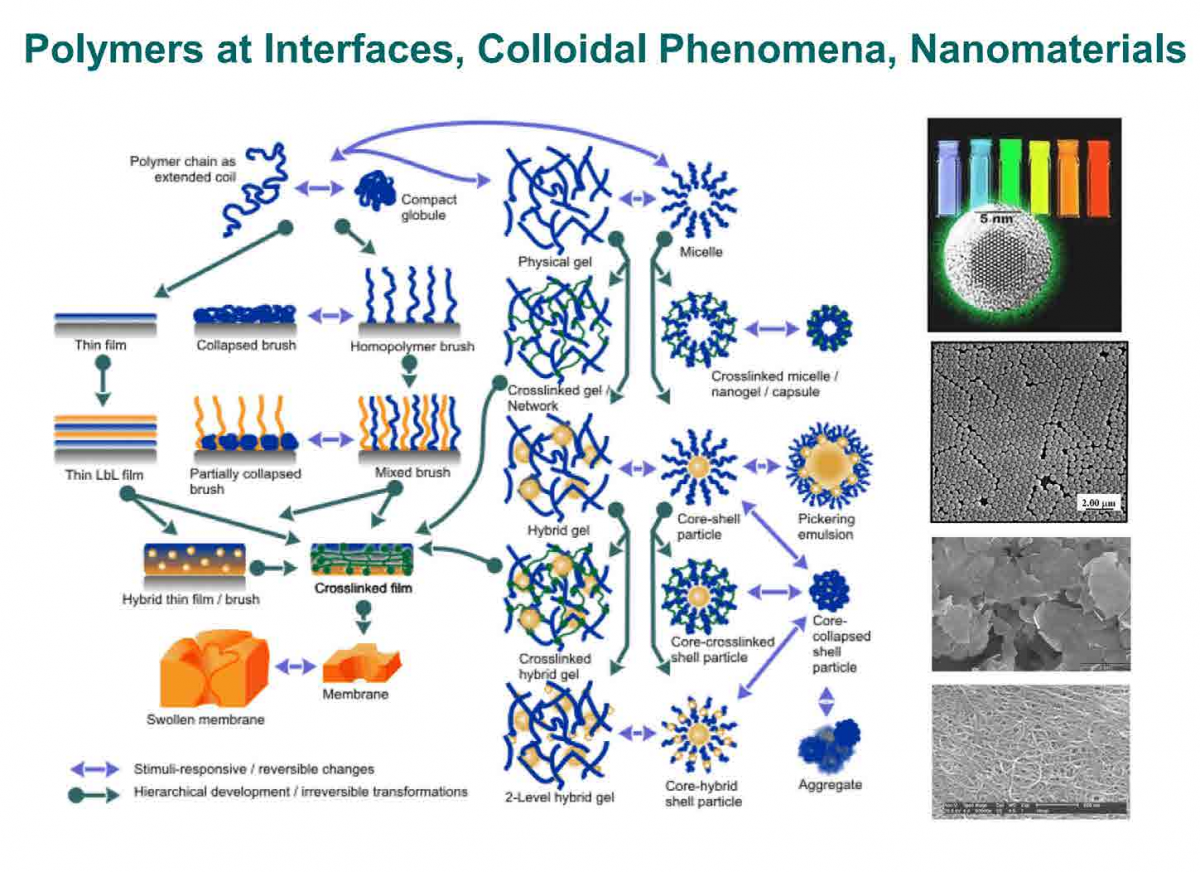
A surfactant family tree essentially allows you to take an alkyl chain.
A polymer or macromolecule is accurately a nanomaterial, a nanomaterial that has surfactant capabilities that is able to order cell assemble on surfaces, flat surfaces, modification in layers, eventually macroscopic properties or the application of polymers towards gelation, emulsion, different types of cross linking and hydro gel type of systems. These are based on co-polymer type of arrangements. A predominant type of a co-polymer that is used as a surfactant RD block,co-polymer linear systems and block copolymers are found in additives, elastomers, they have interesting mesophases in which you can order the chain length and the molecular way to produce different phases such as cylindrical, lamellar spherical and so on.
![]()
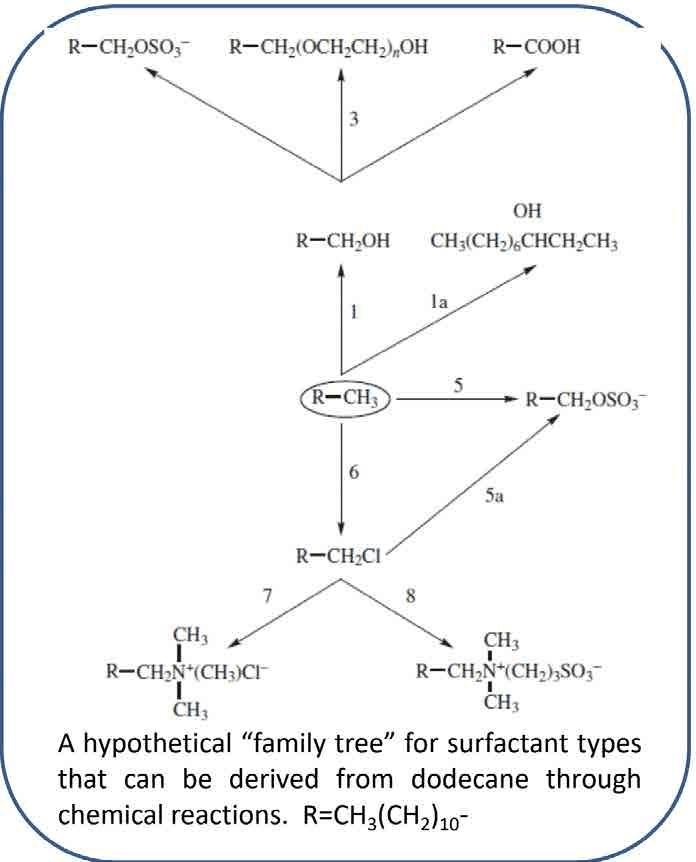
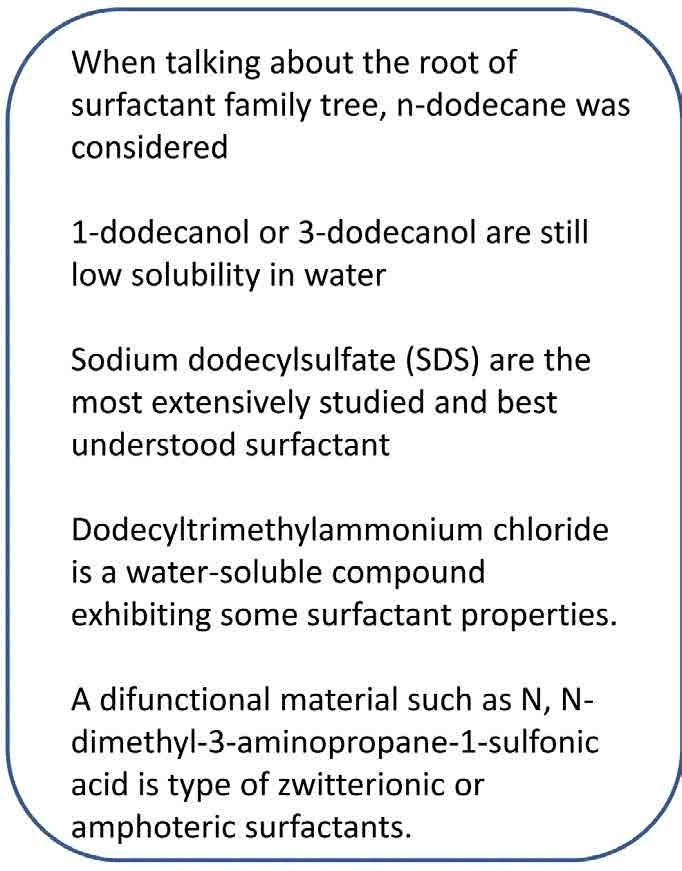
What are bio surfactants?
Bio surfactant means it's a surfactant derived from a natural source. Typically this comes from plants, animals or extraction from microbial cells and the separation procedures simply involves extraction, precipitation and distillation. And a lot of them of course appeal in terms of sustainability or use of natural derived surfactants versus that of synthetic and Petro based surfactants. They are typically non toxic and therefore are preferred in some applications.
A polymer surfactant is derived from a macromolecule. A bio surfactant can be derived from a microorganisms or bio base feed stacks, a nonlinear surfactant or an unconventional nanoparticle surfactant and their applications in viscoelastics surfactants.
Bio surfactants can be derived by extraction directly from plants and animals. However, certain enzymes or microbes are coded to produce different surfactants. This can be based on genetic engineering and harvested as well in a bioreactor. So for example some of these bio-based surfactants can be programmed to have the presence of carbon, nitrogen or even multi valent ions. So in a micro organism for example, it will produce the surfactants and can be harvested separately from the micro organisms. A bio-reactor requires media, fermentation, and a procedure and product recovery.
Bio surfactants are used in a number of applications such as heavy metal remediation or they can be derived to become potent antibiotics, especially the quaternary amine containing derivatives. And they can be used also for different types of agriculture. For example, a bio surfactant can be used to remove styrene from contaminated soil. Styrene is a monomer, used to make polystyrene or petroleum based polymer and this is a demonstration that it can be used for remediation or bio-remediation to remove a styrene or even other PCB back off contaminants.
For the complete webinar on Surfactant Design and other webinars with Dr. Advincula: https://www.parksystems.com/medias/nano-academy/webinars/ 115-webinars/1674-new-surfactant-design

